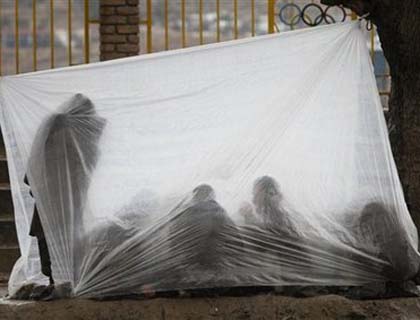A new report on drug addicts in Afghanistan has shocking statistics. The official recorded number has increased one million, of which about 60,000 are women! And even more shocking, over 70,000 of these addicts are from Herat province alone. If the main reason for this huge number could be the fact that Herat borders Iran and Afghan refugees who return bring the evil with them, then the question is, refugee returnees repatriate to all parts of Afghanistan, why such huge concentration only in Herat? Official reports do not explain this.
However, what we know is that the Government has no efficient program for drug addicts in the province, or any part of the country for that matter. There is only one hospital of 150-bed for over 70,000 drug addicts in Herat. There must be strict checking and rehabilitation centers in Herat for all the returnees. The mounting number of drug addicts across the country is just one of the problems that come with Afghan refugees, besides the spread of HIV AIDS, prostitution and social problems. With easy availability of all kinds of drugs in cheap prices, it is spreading fast in other parts of the country.
The above shocking statistics are just from Herat. The overall picture is much bleaker. Our economy depends heavily on drug trade. While talking at an international conference recently, the UN Secretary General Ban Ki-moon urged countries involved in Afghanistan to step up the fight to combat poppy cultivation and drug business. He said there cannot be sustainable development when opium production is the only viable economic activity in Afghanistan, and added that there cannot be stability when 15 percent of our gross domestic product comes from drug trade.
The UN Secretary General said Afghanistan's drug economy is worth $2.4 billion. He emphasized that the Afghan Government must prioritize the issue of narcotics. Law enforcement agencies must work harder on eradication crops, eliminating laboratories, keeping precursors from entering the country.
According to a UN report released last year, poppy cultivation in Afghanistan has increased significantly. The report said there has been an increase of seven percent in the year 2011 compared to the year before that. The increase was reported despite the fact that Ministry of Antinarcotics had claimed to have destroyed 65 percent of the total cultivation that year.
The US and its NATO allies caught up in the prioritize of an exit strategy, are largely ignoring the focus on poppy eradication, and our Government with some bigwigs of the power corridor involved in drug profits have always been opposing effective and harsh programs of eradication.
Our neighboring countries including Russia have been calling for active anti-narcotics action in Afghanistan.
The Government and international forces should enforce the poppy eradication campaign. The war on poppy is forgotten. Aside from the fact that a huge part of the financial support to insurgents comes from transport and smuggling of opium, it's also exporting deaths to millions of people around the world, and the number of drug addicts increasing in Afghanistan. Taliban militants get $400 million a year through direct and indirect revenue from poppy cultivation, transportation and trade.
The Counter-Narcotics law is yet to go in effect. It was approved in 2009, but under the pretext of the so-called alternative programs, the Government has not implemented the law. Once this law goes into effect, there will be legal action against farmers who cultivate poppy crop. The punishment is not strict, but this law must be implemented and practiced strongly.
The law includes 5 chapters and 67 Articles. It was approved in 2009, but due to the poppy eradication campaigns, its implementation has been postponed.
Once this law goes into effect, there will be legal action against farmers who cultivate poppy crop. The punishment is not strict, but this law must be implemented and practiced strongly to make it effective. According to latest reports, there has been an increase of seven percent in the year 2011 compared to the previous year.
If the current policy of bribing the poppy-growing farmers continues, which benefits the drug mafia and opium business tycoons who make the real deal from all this, it will keep Afghanistan the biggest producer of drugs in the world for the second consecutive decade.
The Government and international community should step up efforts against poppy eradication.
Meanwhile, the government should pay greater attention toward rehabilitation of drug addicts and its spread. They must launch effective programs. Three is no strategy and programs for bringing back the drug addicts to normal life. There are very few special hospitals for them across the country. The number of women drug addicts—60,000—is something that should deeply worry us all. The international community has other priorities, but this issue needs much greater attention.

